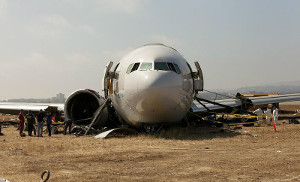Special feature on reinsurance: Major trends for 2015
The second part will be dedicated, among other things, to the rating of reinsurers, the loss experience of natural catastrophe risks and to aviation reinsurance. The issue summary will be completed with an overview of the world's main reinsurance markets. In addition, and as of early November, we will be publishing on the website of Atlas Magazine a directory of leading reinsurers operating in Africa, the Middle East and the world.
 View of Monaco which annually hosts the Monte Carlo Rendez-Vous View of Monaco which annually hosts the Monte Carlo Rendez-Vous |
Reinsurance major trends for 2015
It is during the traditional Monte Carlo Rendez-vous in early September that the first January renewal trends start to take shape. Talks engaged between brokers, cedants and reinsurers stand as an opportunity for everyone to take stock of the market measuring both the available capacities and retentions along with reinsurance demands.
Globally
Reinsurers are preparing themselves for a very difficult 2015 renewal, seriously strained by the economic environment: foreign capital inflows (sidecars, securitization, cat bonds,...), overcapacity, low interest rates, drop in claims, increased retentions of insurers, stiff competition. All of these factors are favorable to insurers who will not hesitate to negotiate the rates down leading reinsurers in a downward cycle that will affect their profitability.
Being on their guard for many months, the rating agencies were quick to diagnose this market downturn. They were the first ones to blow the whistle despite some reassuring news coming from giant professionals like Munich Re, Swiss Re and Scor. Early in 2014, Standard & Poor's downgraded the outlook of global reinsurance from stable to negative. It was followed in June by Fitch and Moody's and by A.M. Best in August.
A soft market
 The reinsurance market has for the last two years been through a soft period. This trend which began in January 2013 and continued during January and July 2014 renewals with price cuts of up to 20%. The declining loss ratio reported in the first half of 2014 (44 billion USD compared to 59 billion USD a year earlier) is likely to soften market conditions.
The reinsurance market has for the last two years been through a soft period. This trend which began in January 2013 and continued during January and July 2014 renewals with price cuts of up to 20%. The declining loss ratio reported in the first half of 2014 (44 billion USD compared to 59 billion USD a year earlier) is likely to soften market conditions.
A further decline in prices seems inevitable for most programs especially those that have not sustained major losses. Reinsurers hope to "save the day" by making concessions in certain sectors and hardening the tone in other risk categories and strongly affected regions. It is through these targeted renewals they hope to contain the decline in their premium income.
Natural catastrophes, downward trends and new risks
The majority of natural catastrophes programs are renewed on January 1. From the beginning of the hurricane season in July, all eyes are set on the Gulf of Mexico whose loss experience is substantially considered to determine the price of natural catastrophe covers on January 1. Other regions also serve as a barometer for setting these rates. Japan / Pacific, Northern Europe and more recently South China are the areas where most devastating cyclones such as the Gulf of Mexico, seriously impact rates.
 Louisiana following hurricane Katrina Louisiana following hurricane Katrina |
In late August 2014, the decline in the intensity and number of these events for the current year will have an impact on the rates of this class of business, which is now on a downward trend. During the first half of 2014 the economic costs and insurable losses related to these catastrophes have reported a respective decrease of 30% and 9.5% compared to the same period of 2013.
If no major event occurs by the end of 2014, the market expects a fall in rates of around 15% in 2015. Cumulated over 2013 and 2014, the decline of natural catastrophes rate could reach 50%. According to some experts, a turnaround would require the occurrence of a major event that would generate a loss of more than100 billion USD. That is to, a disaster of a magnitude greater than that of Katrina which accounted for 85 billion USD of losses in 2005.
Evolution of economic and insured losses: 1 st semester 2013 – 1 st semester 2014
Material damage in billions USD| 1st half year 2013 | 1st half year 2014 | Evolution | Average of the last ten years (1st half year) | |
|---|---|---|---|---|
Total economic losses | 56 | 44 | -21% | - |
Total insured losses | 25 | 21 | -16% | 27 |
Economic losses related to NatCat | 59 | 41 | -30% | 94 |
Insured losses related to NatCat | 21 | 19 | -9.5% | 23 |
Casualties | 7 000 | 4 700 | -33% | - |
 Floods © Lamiot, CC BY 3.0 Floods © Lamiot, CC BY 3.0 |
To these natural catastrophes labeled as highly intense, frequent claims such as those caused by thunderstorms, hailstorms, floods of great rivers are added.
Added up together, these mini natural catastrophes strain the retentions of insurers and are the source of additional demand for capacity. Germany, France, Britain and the countries of Central Europe are particularly vulnerable to this type of risk frequency. According to l’Argus de l’assurance 1 , the claims accounted for by hail and flooding covered by European insurers amounted to 7 billion USD for the summer of 2013 alone.
1 L’Argus de l’assurance, N°7375, September 2014Aviation, new upward cycle
After a series of air catastrophes that have occurred since the beginning of 2014, the aviation market (hull, third party liability, and war risks) is strongly going upward.
The market, which has not sustained a number of losses of high intensity since September 11, 2001, has reported five major events only for the period from March to July 2014.
Aviation major losses during the first semester 2014
Material damage and TPL in millions USDDate | Flight/aircraft | Company/ location | Casualties | Hull damage | TPL damage | Total damage per loss |
|---|---|---|---|---|---|---|
24 July | AH 5017 | Air Algérie | 118 | 83 | 117 | 200 |
23 July | GE 222 | TransAsia Airways, Taïwan | 54 | - | - | 120 |
17 July | MH 17 | Malaysian Airlines | 298 | 55 | 545 | 600 |
14 July | 11 aircrafts | Tripoli airport, Libya | - | 500 | - | 500 |
8 March | MH370 | Malaysian Airlines | 239 | 120 | 280 | 400 |
Total | - | - | 709 | 758 1 | 942 1 | 1700 |
 The sharp rise in claims in 2014 marks the end of the market’s soft period, which, despite a constant increase in the number of aircrafts and transported passengers, has maintained a steady decline in premium income since 2003.
The sharp rise in claims in 2014 marks the end of the market’s soft period, which, despite a constant increase in the number of aircrafts and transported passengers, has maintained a steady decline in premium income since 2003.
According to some estimates, the increase in 2015 premiums is likely to be set in the minimum range of 15% to 30% for Asian and European airlines. Air carriers from other areas will also experience rate increases between 10% and 15%.
After the crash of MH Flight 17 of Malaysian Airlines, shot by missiles over Ukraine and the destruction of 11 aircrafts and airport infrastructure in Tripoli, war risk rates will sharply go up with expected increases around 300%.
